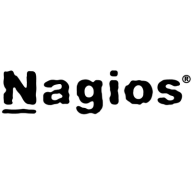


Find out what your peers are saying about Zabbix, Auvik, SolarWinds and others in Network Monitoring Software.
| Product | Market Share (%) |
|---|---|
| Datadog | 3.2% |
| Nagios XI | 3.1% |
| Opsview | 0.4% |
| Other | 93.3% |



| Company Size | Count |
|---|---|
| Small Business | 78 |
| Midsize Enterprise | 42 |
| Large Enterprise | 82 |
| Company Size | Count |
|---|---|
| Small Business | 22 |
| Midsize Enterprise | 17 |
| Large Enterprise | 21 |
| Company Size | Count |
|---|---|
| Small Business | 11 |
| Midsize Enterprise | 5 |
| Large Enterprise | 9 |
Datadog is a comprehensive cloud monitoring platform designed to track performance, availability, and log aggregation for cloud resources like AWS, ECS, and Kubernetes. It offers robust tools for creating dashboards, observing user behavior, alerting, telemetry, security monitoring, and synthetic testing.
Datadog supports full observability across cloud providers and environments, enabling troubleshooting, error detection, and performance analysis to maintain system reliability. It offers detailed visualization of servers, integrates seamlessly with cloud providers like AWS, and provides powerful out-of-the-box dashboards and log analytics. Despite its strengths, users often note the need for better integration with other solutions and improved application-level insights. Common challenges include a complex pricing model, setup difficulties, and navigation issues. Users frequently mention the need for clearer documentation, faster loading times, enhanced error traceability, and better log management.
What are the key features of Datadog?
What benefits and ROI should users look for in reviews?
Datadog is implemented across different industries, from tech companies monitoring cloud applications to finance sectors ensuring transactional systems' performance. E-commerce platforms use Datadog to track and visualize user behavior and system health, while healthcare organizations utilize it for maintaining secure, compliant environments. Every implementation assists teams in customizing monitoring solutions specific to their industry's requirements.
Nagios XI provides monitoring of all mission-critical infrastructure components, including applications, services, operating systems, network protocols, systems metrics, and network infrastructure. Third-party add-ons provide tools for monitoring virtually all in-house and external applications, services, and systems.
Nagios XI uses a powerful Core 4 monitoring engine that provides users with the highest levels of server monitoring performance. This high degree of performance enables nearly limitless scalability and monitoring powers.
With Nagios XI, stakeholders can check up on their infrastructure status using the role-based web interface. Sophisticated dashboards enable access to monitoring information and third-party data. Administrators can easily set up permissions so users can only access the infrastructure they are authorized to view.
Nagios XI Benefits and Features
Some of the benefits and top features of using Nagios XI include:
Reviews from Real Users
Nagios XI stands out among its competitors for a number of reasons. Several major ones are its integration options and monitoring abilities, as well as its alerting features.
David P., a senior DevOps engineer at EML Payments Ltd, writes, “We use Nagios as a network discovery tool. We use Nagios to maintain our uptime statistics and to monitor our services. It has allowed us to be much more sophisticated in our monitoring and alerting.”
An IT-OSS manager at a comms service provider notes, “Nagios XI has a custom API feature, and we can expose custom APIs for our integration. This is a great feature.”
Opsview is a modern and scalable SaaS or on-premise monitoring solution that gives your organization full visibility into on-premises and cloud IT infrastructure. It delivers simplified management and a single pane of glass view of your entire IT operations. The solution provides unified insight into dynamic IT operations on premises, in the cloud, or hybrid. Additionally, it can be used either in agent-based or agentless configurations.
You can use Opsview to monitor:
Operating systems
Networks
Cloud
VMs
Containers
Databases
Applications
Opsview Features
Opsview comes with an array of features, including:
AutoMonitor express scan: This feature makes it easy for you to keep up with your
changing IT infrastructure by helping you find new Windows, VMware, and Azure hosts.
Business service monitoring: This enables you to see the health of all your end-to-end
business services in real time and in one place.
Autodiscovery: With this feature you can automatically discover and profile hosts in your environment, which helps you quickly populate information into Opsview for monitoring.
Network analyzer: Opsview provides you with a complete picture of your company's
network infrastructure via its Network Topology, Flow Collector, & NetAudit modules.
Customizable dashboards: Opsview dashboards give you a view of all your monitoring
metrics in interactive dashboards that are easy to create and maintain.
Customizable reports: With Opsview, reports connect to the Opsview Data Warehouse and present historical data collected by Opsview. The solution’s out-of-the-box reports include performance, SLA, and events.
Disaster recovery: Opsview gives your organization peace of mind with its disaster
recovery by restoring your Opsview system if needed.
Event handlers: Opsview event handlers allow for automation and proactive monitoring so that your users are not impacted.
Events viewer: The events viewer feature helps you easily see all the important events in your Opsview system.
High availability server: Opsview has a high availability monitor that offers protection to ensure that you never lose IT infrastructure visibility.
Multitenancy: Multitenancy makes it possible for your MSP to give control of Opsview to your end users. It also allows you to create new hosts and roles as well as users while using a secure, private environment.
Log analytics: This feature allows you to improve logging visibility, reporting, correlation, and alerting.
SNMP traps: With SNMP traps, you can reduce your network and server load and provide faster service to your customers.
Opsview Benefits
There are many benefits to implementing Opsview. Some of the biggest advantages the
solution offers include:
Extensible: Opsview can be used in agent-based or agentless configurations. In addition, it can sit above multiple monitoring tools, aggregating information into a single pane of glass.
Scalable: Opsview is very scalable. It can easily scale beyond 10,000 monitored devices via its distributed model that spreads monitoring across many monitoring engines. Its databases may be located on dedicated servers to further distribute load.
Functional overview: Opsview monitors your IT infrastructure, network and applications, and displays alerts. It is also designed to generate notifications and integrate with your other service management tools.
Flexible: Opsview has a flexible web framework, allowing dashboards and monitoring views to be easily customized and extended.
Integration: Easily integrate Opsview Cloud with your current operational tools, including help desks, service management, automation and notification tools
Automation: Automate the configuration and operation of your IT monitoring system using Opsview’s intrinsic automation capabilities. Allowing you to spend more time on projects that drive your business.
Opsview Cloud
Opsview Cloud gives your business 24/7 Saas Monitoring for your entire IT estate. Benefits include:
Reducing your infrastructure costs
Realigning your resources to focus on business value IT projects
Ensuring you have 24/7 monitoring
Utilizing Opsview experts to provide monitoring best practices/tips and tricks